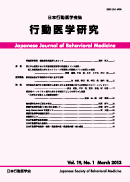Volume 23, Issue 2
Displaying 1-12 of 12 articles from this issue
- |<
- <
- 1
- >
- >|
-
2018Volume 23Issue 2 Pages 55
Published: 2018
Released on J-STAGE: June 29, 2018
Download PDF (891K)
-
2018Volume 23Issue 2 Pages 56-57
Published: 2018
Released on J-STAGE: June 29, 2018
Download PDF (900K) -
2018Volume 23Issue 2 Pages 58-62
Published: 2018
Released on J-STAGE: June 29, 2018
Download PDF (935K) -
2018Volume 23Issue 2 Pages 63-69
Published: 2018
Released on J-STAGE: June 29, 2018
Download PDF (1673K) -
2018Volume 23Issue 2 Pages 70-
Published: 2018
Released on J-STAGE: June 29, 2018
Download PDF (949K) -
2018Volume 23Issue 2 Pages 76-81
Published: 2018
Released on J-STAGE: June 29, 2018
Download PDF (940K) -
2018Volume 23Issue 2 Pages 82-88
Published: 2018
Released on J-STAGE: June 29, 2018
Download PDF (950K) -
2018Volume 23Issue 2 Pages 89-97
Published: 2018
Released on J-STAGE: June 29, 2018
Download PDF (965K) -
2018Volume 23Issue 2 Pages 98-102
Published: 2018
Released on J-STAGE: June 29, 2018
Download PDF (962K)
-
2018Volume 23Issue 2 Pages 103-110
Published: 2018
Released on J-STAGE: June 29, 2018
Download PDF (963K)
-
2018Volume 23Issue 2 Pages 111-112
Published: 2018
Released on J-STAGE: June 29, 2018
Download PDF (894K)
-
2018Volume 23Issue 2 Pages 113-114
Published: 2018
Released on J-STAGE: June 29, 2018
Download PDF (934K)
- |<
- <
- 1
- >
- >|
